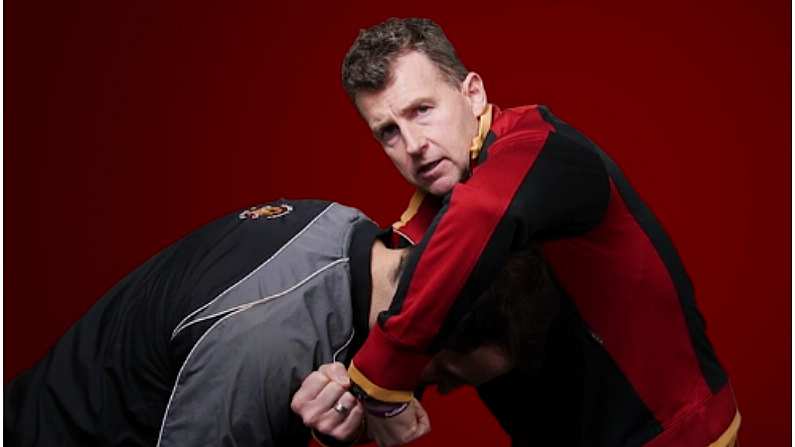In case you've been living under a rock, the Six Nations begins this weekend with Ireland travelling to Scotland, England at home to France and Italy hosting Wales.
Rugby's new tackle laws are undoubtedly going to come under the spotlight and there will probably be one or two big incidents (similar to the sending-off of Ulster's Sean Reidy a few weeks ago in the Pro12) that will see the new laws in action. So it would be handy to know what the new laws actually mean for the game.
Balls.ie's favourite referee, Nigel Owens (who takes charge of Ireland's clash with France on 25th February) has been explaining the laws to Wales Online in the excellent video below. They've asked Owens questions under a number of headings and it's really informative.
Owens starts off by reassuring us that the new laws haven't really changed much:
The law hasn't changed at all. It's just a guideline, a directive, for us to focus on the really reckless and dangerous hits. Especially with high tackles in contact with the head. So what was a high tackle last year is still a high tackle this year, but there's no difference at all.
But this year, on and off the field, if you do tackle somebody recklessly - which means you knew there was an element of risk in making a tackle high that you knew could have made contact with the head - if that's the case then you're looking at a card of some colour. So you'll be dealt with more harshly on the field, and you'll also be dealt with more harshly in the disciplinary afterwards if you get found guilty of a red card offence.
Owens defines a high tackle as the following:
A high tackle is when you tackle somebody above the line of the shoulder and around the neck. That's what a high tackle is, and that's what it's always been. So nothing's changed there.
He then spends the rest of the video below giving demonstrations of different aspects of the new laws:
1:01 mins - 1:40 mins: What is a high tackle?
1:42 - 2:55: When is a card shown?
2:55 - 3:39: What makes a tackle legal?
3:39 - 4:20: What makes a tackle illegal?
4:22 - 4:58: Advice for players?
4:59 - 6:09: What if the attacker is diving for a try?
Owens finishes off the piece with a few final words on the new rules:
If you are going to tackle high in the Six Nations then you are going to have to be prepared to take the consequences, whether you agree with it or not. But I think the majority of people would agree that we want to make the game as safe as we possibly can, and that's what these guidelines are there for. We'll do our best as referees to make our decisions as accurate and as consistent as we can, and I'm sure the players will do their best as well in eliminating the element of risk if you are going to tackle high.
Good man, Nige. We're expecting a good display from yourself at the end of February so!
(Full marks to Wales Online for the excellent video)










